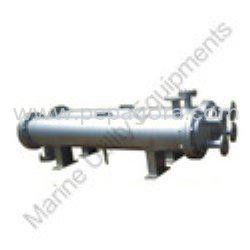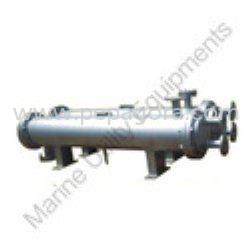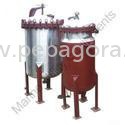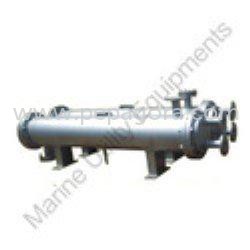Marine Utility Equipments
Product Range
Fact Sheet
- Location:Punjab, India
- Year of Establishment:1990
- Business Type:Manufacturer, Retailer, Exporter
- Turnover:Rs. 50 Lakh - 5 Crore
(or USD 100 K - 1 Million) - Main Products:Industrial Cooling Tower, Industrial Heat Exchanger
- Reviews & Rating:
Get Verified, Sell more with
- Buyer's trust
- Faster conversions
- Better Rankings
- More
Its Free
Verify NowPlate Heat Exchangers
Plate Heat Exchangers Manufacturer INDIA A plate type heat exchanger is a type of heat exchanger that uses metal plates to transfer heat between two fluids.
- FOB PriceNA
- Min Order QuantityNA
- Payment TermsNA
Other Details
Plate Heat Exchangers Manufacturer INDIA
A plate type heat exchanger is a type of heat exchanger that uses metal plates to transfer heat between two fluids. This has a major advantage over a conventional heat exchanger in that the fluids are exposed to a much larger surface area because the fluids spread out over the plates. This facilitates the transfer of heat, and greatly increases the speed of the temperature change. It is not as common to see plate heat exchangers because they need well-sealed gaskets to prevent the fluids from escaping, although modern manufacturing processes have made them feasible.
The concept behind a heat exchanger is the use of pipes or other containment vessels to heat or cool one fluid by transferring heat between it and another fluid. In most cases, the exchanger consists of a coiled pipe containing one fluid that passes through a chamber containing another fluid. The walls of the pipe are usually made of metal, or another substance with a high thermal conductivity, to facilitate the interchange, whereas the outer casing of the larger chamber is made of a plastic or coated with thermal insulation, to discourage heat from escaping from the exchanger. The plate heat exchanger (PHE) was invented by Dr Richard Seligman in 1923 and revolutionized methods of indirect heating and cooling of fluids.
Plate type heat exchanger one is composed of multiple, thin, slightly-separated plates that have very large surface areas and fluid flow passages for heat transfer. This stacked-plate arrangement can be more effective, in a given space, than the shell and tube heat exchanger. Advances in gasket and brazing technology have made the plate-type heat exchanger increasingly practical. In HVAC applications, large heat exchangers of this type are called plate-and-frame; when used in open loops, these heat exchangers are normally of the gasket type to allow periodic disassembly, cleaning, and inspection. There are many types of permanently-bonded plate heat exchangers, such as dip-brazed and vacuum-brazed plate varieties, and they are often specified for closed-loop applications such as refrigeration. Plate heat exchangers also differ in the types of plates that are used, and in the configurations of those plates. Some plates may be stamped with "chevron" or other patterns, where others may have machined fins and/or grooves.
Liquid foods such as milk, fruit juices, beers, wines, and liquid eggs are pasteurized using plate-type heat exchangers. Wine and fruit sjuices are normally deaerated prior to pasteurization in order to remove oxygen and minimize oxidative deterioration of the products. Plate-type heat exchangers consist of a large number of thin, vertical steel plates that are clamped together in a frame.
The plates produce an extremely large surface area, which allows for the fastest possible transfer. Making each chamber thin ensures that the majority of the volume of the liquid contacts the plate, again aiding exchange. The troughs also create and maintain a turbulent flow in the liquid to maximize heat transfer in the exchanger. A high degree of turbulence can be obtained at low flow rates and high heat transfer coefficient can then be achieved.
Features:-
Easy maintenance and suitable for CIP, plate pack easily accessible
High heat transfer coefficients
Flexibility to change plate arrangement and to add or remove plate
No mixing of product
Compact constructions
Optimized heat recovery
Images








